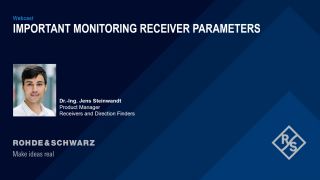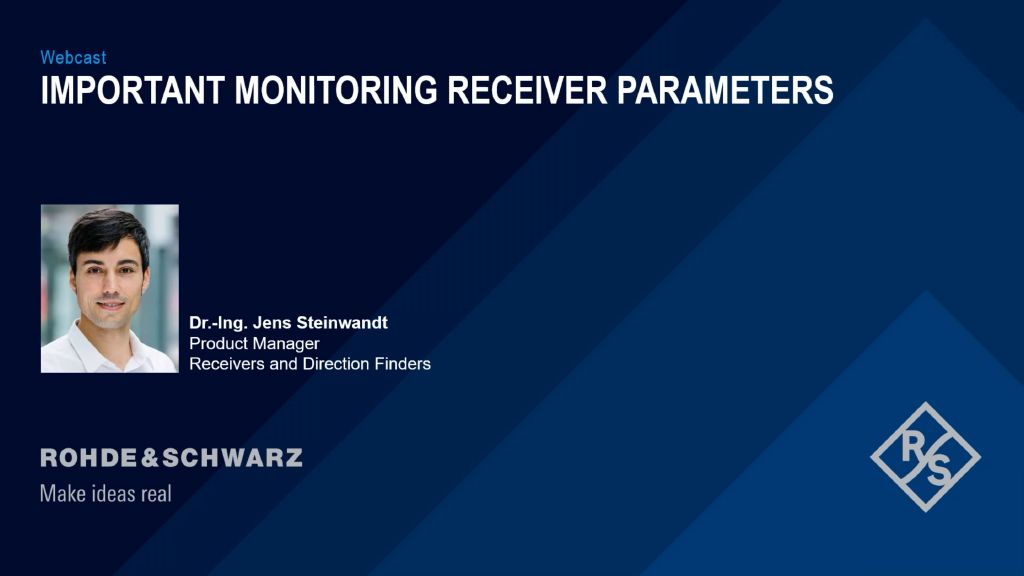All you need to know about monitoring receivers
Radiomonitoring receivers are specifically optimized for monitoring tasks and differ fundamentally from test receivers and spectrum analyzers. Monitoring receivers are used for the following tasks:
- Detection of unknown signals in unknown environments
- Search for activities over wide frequency ranges with fast scanning modes
- Monitoring of individual frequencies, lists of frequencies or frequency ranges
- Measurement of spectral characteristics of very short or rarely occurring signals
- Triggering of further activities after a signal is detected
- Demodulation of communications and/or transfer of demodulated signals for processing
- Direction finding and radiolocation of signal sources
- Coverage measurements and measurements in line with ITU recommendations
- Storage of measurement results and I/Q data for reporting and offline analysis
The above tasks place special requirements on the hardware and software of the receivers, the type of control via front panel or remote control interface, the provision and processing of captured data, and the integration of receivers into complex systems. Monitoring receivers must be able to process antenna signals with high cumulative loads and wide dynamic range. In particular, gapless real-time processing is a requirement that other receiver types usually cannot meet.
What are typical application areas for monitoring receivers?
Whether operated as standalone devices or integrated into dedicated civil and military systems, high-performance monitoring receivers are essential in the following applications:
1. Spectrum monitoring
Regulatory authorities continuously monitor the electromagnetic spectrum to ensure compliance with licenses, regulations and communications standards, and to detect and locate unknown and unlicensed emissions. Monitoring receivers are the key components in spectrum monitoring systems for all ITU-compliant monitoring tasks, including automated detection, identification and localization of interfering signals and unlicensed emissions.
2. Interference hunting
Interference caused by illegal and unwanted emissions in urban areas is a serious problem for mobile service providers, security agencies and government authorities. Locating and mitigating these interferers to maintain proper spectrum use often requires mobile operation with a monitoring vehicle or with handheld monitoring receivers in difficult-to-reach locations such as buildings or rooftops.
3. Signals intelligence
Military and security organizations often employ monitoring receivers to perform signals intelligence (SIGINT) in order to gather crucial information about the spectral environment. Signal intelligence can be further categorized as follows:
a. Communications intelligence (COMINT)
Intercepting strategic and tactical radiocommunications signals to gather relevant information about their characteristics, behavior, origin and content is extremely important for many security-providing authorities.
b. Electronic intelligence (ELINT)
ELINT focuses on the interception and analysis of radar signals from a secure distance to increase situational awareness. The acquired information provides a strategic advantage and may be used for platform protection and electronic countermeasures.








